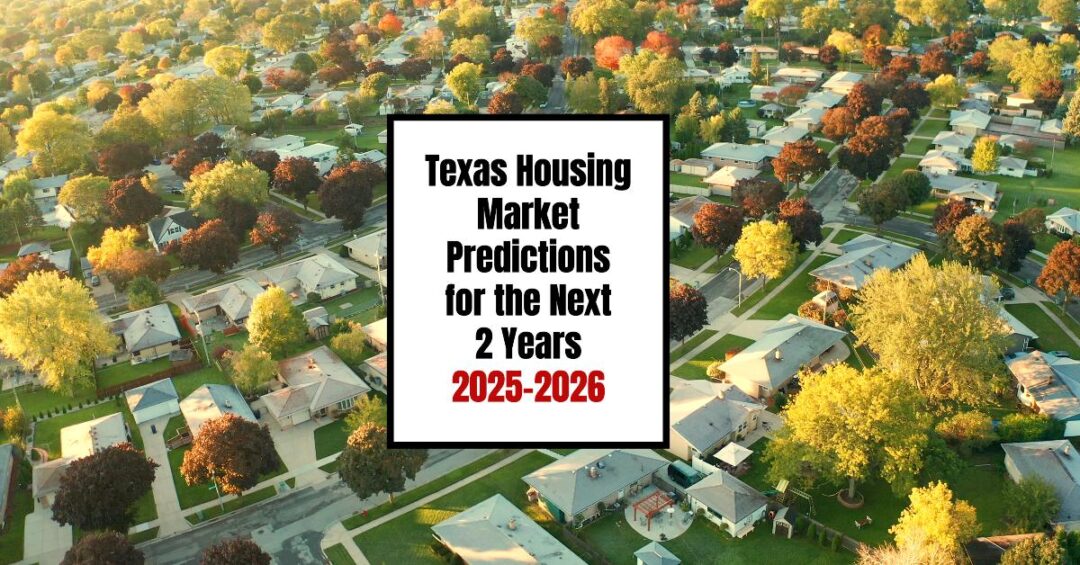
Texas Housing Bubble Bursts as Inventory Hits Record Highs
The Texas housing boom is dead. After years of soaring prices and frenzied bidding wars, the Lone Star State's real estate market has shifted dramatically.
Housing inventory across Texas has exploded to 123,000 listings in April 2025, a staggering 53 percent above normal levels, according to Nick Gerli, CEO of Reventure App. This surge signals a fundamental market rebalancing that's forcing sellers to face a new reality.
The evidence is undeniable. Price cuts are becoming the norm rather than the exception.
Inventory Surge Reshapes Market Dynamics
Texas has witnessed an unprecedented inventory buildup over the past year. The supply of available homes has reached levels not seen in a decade, with active listings expanding nearly 30 percent year over year by January 2025.
This inventory explosion is most dramatic in the state's major metropolitan areas. Dallas's housing market has seen inventory surge by 50% over the past year, giving buyers substantially more options and negotiating power than at any point since before the pandemic.
What's driving this inventory buildup? Multiple factors converge:
First, new construction has continued at a blistering pace. Texas led the nation in homebuilding, issuing 15 percent of the country's new-home permits in 2024, flooding the market with fresh inventory.
Second, migration patterns have shifted significantly. In 2022, net domestic migration brought 222,100 new residents to Texas. By 2024, that number plummeted to 85,200, representing a 62 percent decline in new arrivals who might otherwise absorb housing supply.
Price Cuts Become the New Normal
The inventory surge has triggered widespread price reductions across Texas markets. In April 2025, 33.6% of Texas homes had price drops, up from 30.0% a year earlier, according to Redfin data.
Austin stands as the poster child for this correction. The city has experienced a 20.4 percent fall in home values from peak pandemic highs, marking "the biggest metro-level correction in America in that timespan," according to market analysts.
The correction varies by region. San Antonio is positioned to experience the steepest decline among major Texas cities in 2025, with a projected price drop of 4.0% that significantly outpaces Austin (-2.1%), Dallas (-2.0%), and Houston (-1.1%).
Buyer behavior has shifted dramatically as well. Only 13.8% of homes in Texas sold above list price in April 2025, down 2.2 percentage points year over year. The average sale-to-list price ratio has fallen to 97.5%, indicating buyers are successfully negotiating discounts rather than paying premiums.
Selling Times Extend as Buyer Urgency Fades
The days of instant sales are over. Properties now linger on the market for significantly longer periods.
In Dallas, "days on market" have risen to over 50 days, more than double the pandemic-era lows when homes often sold within a week of listing. This extended selling timeline creates a feedback loop: as homes sit longer, inventory continues accumulating, further pressuring sellers to reduce prices.
The psychological impact on sellers cannot be overstated. Many who purchased or refinanced during the pandemic's ultra-low interest rate environment now face a market where their expected equity gains have evaporated.
What Lies Ahead for Texas Real Estate
Market experts project continued cooling throughout 2025. Nick Gerli predicts Texas home prices could drop an additional 4 percent statewide over the next year, with affordability challenges persisting throughout 2025 and possibly into 2026.
Some regions face more severe risks. Gerli warns: "I could see a 15-20 percent correction in the cards, especially if there is a recession in the oil industry. Oil prices are down to $57/barrel, and this is a level that's problematic for Texas' economy."
For buyers, this correction presents opportunities unseen in years. Increased inventory means more choices, while widespread price cuts create negotiating leverage that was nonexistent during the pandemic boom.
For sellers, the message is clear: realistic pricing is essential. Properties priced based on 2022 or 2023 comparables are likely to sit unsold as buyers now have the luxury of patience and options.
For investors, the Texas correction serves as a reminder that no market, however fundamentally strong, is immune to the basic economic principles of supply and demand.
The Bigger Picture
The Texas housing correction reflects broader economic shifts. Rising interest rates have dramatically impacted affordability. The migration boom that fueled demand has slowed considerably. Construction has continued unabated, creating a supply-demand imbalance that will take time to resolve.
What makes this correction particularly noteworthy is that it's happening in Texas, long considered one of America's most resilient housing markets due to its business-friendly environment, lack of state income tax, and relatively affordable housing compared to coastal markets.
If Texas is experiencing this level of correction, it raises questions about what might happen in less fundamentally sound markets across the country.
The data tells a clear story: the Texas housing market is undergoing a significant correction that shows few signs of abating in the near term. For those involved in real estate, from homeowners to investors to industry professionals, understanding this new reality is the first step toward navigating it successfully.
